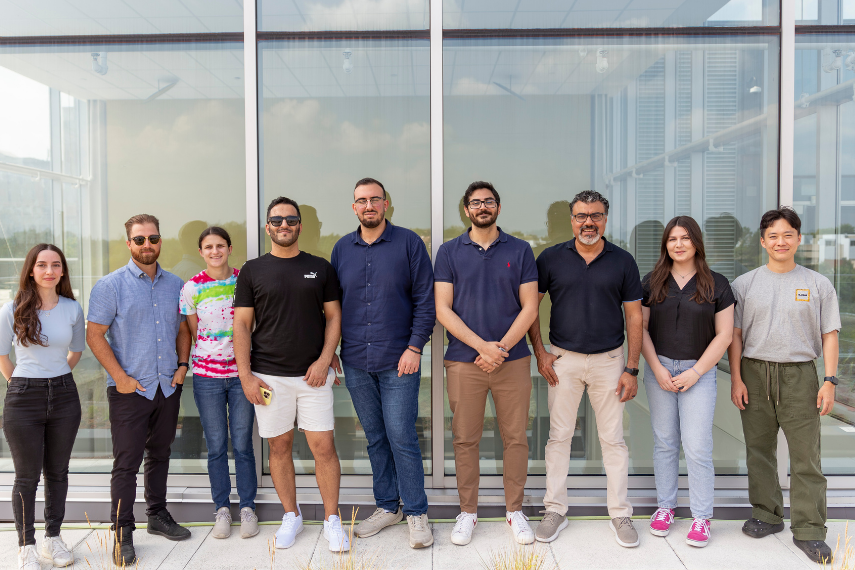A Leap Towards Efficiency: The Rise of Airlift Pumps in Multiphase Flow Systems

Fluid dynamics, especially in the food industry, has always been a puzzle. While Newtonian fluids have been well-understood for a while, non-Newtonian ones, like ketchup and mayonnaise, have always thrown a curveball at researchers. How do these substances flow differently and why?
Along with his committed team, Dr. Wael Ahmed embarked on a journey to unlock these mysteries. Using advanced computational models and real-world experiments, they have discovered novel ways in which airlift pumps can be optimized to handle these tricky fluids. Their approach is not just theoretical; the team went above and beyond, collaborating with industry partners like FloNergia Inc., to test their findings in real-world settings. 
From Lab to Plate: The Real-World Impact
The team's discoveries have profound implications. By understanding the quirks and characteristics of these fluids, industries can develop more efficient and cost-effective methods of processing and transporting them. This could lead to cheaper food products, less wastage, and more innovation in food texture and delivery.
The world of multiphase flow, as Ahmed explains, is about fluids in different phases moving along the same path. This might sound straightforward, but imagine trying to pump ketchup or milk using conventional methods. These are not your everyday Newtonian fluids. They resist, they react, and most crucially, they are integral to the multi-billion dollar food industry. Ahmed’s research specifically targets these complex, non-Newtonian fluids. The goal? To move them using nonconventional pumps. Ahmed’s research team employed innovative computational models and rigorous laboratory experiments to dive deep into the non-Newtonian fluid behaviors. One pivotal technique involved visualizing the fluid flow using high-speed cameras, capturing minute deviations and inconsistencies in real time. The data gathered was then processed using advanced algorithms to predict fluid behavior under varied conditions.
The Challenges on the Way
Every innovation has its challenges. For Ahmed, the true test was to transition from the abstract world of fluid dynamics and phase interactions to the nitty-gritty of product manufacturing, marketing, and market readiness. Their comprehensive approach encompasses everything from the initial ideation to field testing and market launch. Their adaptations led to a smoother, more predictable flow, diminishing the common hindrances industries typically grapple with.
Training the Next Generation
However, the story does not end with commercial successes. Ahmed proudly highlights the role of undergraduates in his research journey. By involving them in real-world problems during their academic years, he is not only offering a rich learning experience but also igniting their passion for research. Through collaborations like the Mitacs program, students from around the world converge in Guelph, many of whom choose to continue their graduate degrees, driven by their immersive research exposure.
Ahmed emphasized the tangible outcomes of his work, stating, "Our lab specializes in pumping technology for multiphase flows, vital for the food industry where standard systems fall short. It's rewarding to see our innovations now benefitting fish farms globally, providing them with a more efficient and reliable solution."
This story was written by Mehran Bozorgi as part of the Science Communicators: Research @ CEPS initiative. Mehran is a PhD candidate in the School of Engineering under Dr.s Syeda Humaira Tasnim and Shohel Mahmud. His research focus is on the development of solar-assisted cooling systems to achieve thermal comfort conditions in buildings in different climate conditions.
Funding Acknowledgement: The funding for this research was provided by a grant (No. 030647) from the Ontario Ministry of Agriculture and Rural Affairs (OMAFRA) under the Ontario Agri-Food Innovation Alliance. In-kind support in the form of airlift pumps was provided by FloNergia Inc.
Reference: D. Fadlalla, J. Rosettani, S. Ghazanfari Holagh, and W. H. Ahmed, “Airlift pumps characteristics for shear-thinning non-Newtonian fluids: An experimental investigation on liquid viscosity impact,” Exp. Therm. Fluid Sci., vol. 149, p. 110994, Nov. 2023, doi: 10.1016/j.expthermflusci.2023.110994.